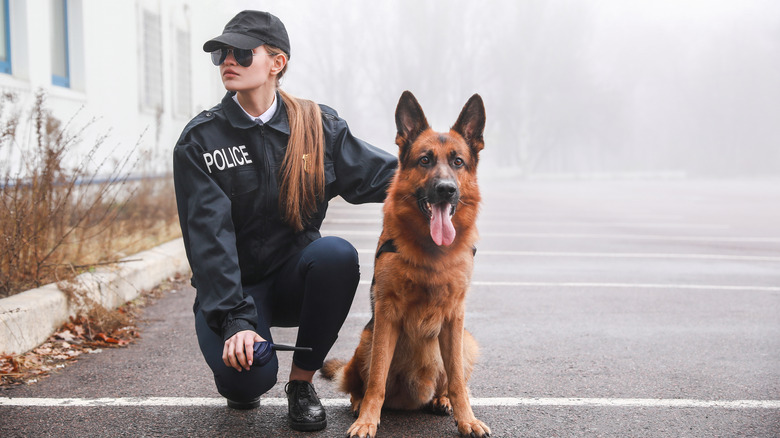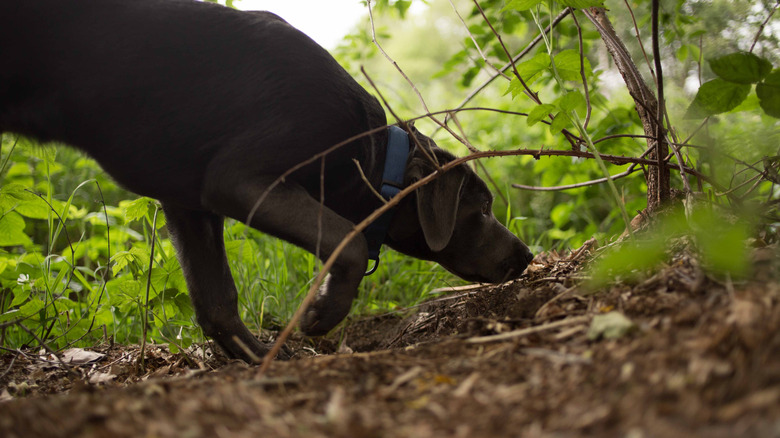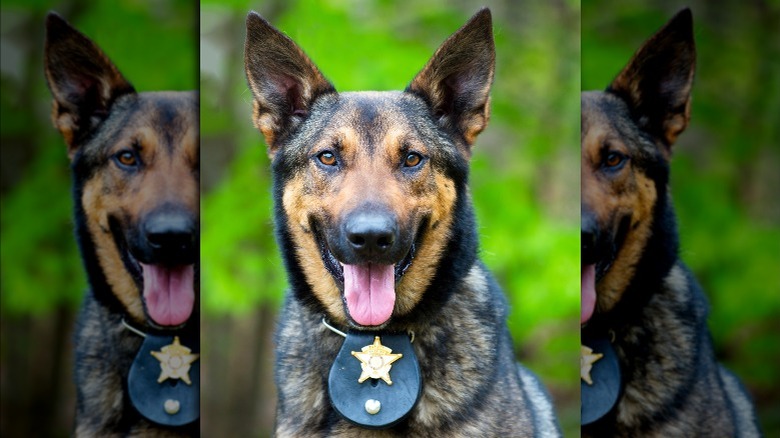Here's How Drug Sniffing Dogs Are Trained
Police departments have been using dogs for security and investigations for more than a hundred years. In fact, one of the first reported cases of authorities using canines to aid in a case was back in 1888 in London, in the hunt for notorious serial killer Jack the Ripper. Back then, the dog breed most commonly used was the bloodhound for its remarkable sense of smell. In the United States, using dogs as part of the police force started being regulated in the 1970s. Today, police dogs aid in detection, search and rescue, and apprehension (via American Kennel Club).
In the United States, sniffing dogs were first used during World War II to detect non-metallic landmines planted by the Germans. Standard detection practices were impossible as they were effective only for metallic landmines. Per Army History, sniffer dogs at that time had an 80% success rate for detecting the metal mines. By 1971, training for sniffing dogs began. The initial goal was to identify explosives, marijuana, cocaine, and heroin. Years later, methamphetamine and ecstasy were added to the list.
Today, the most common breeds for sniffer dogs are the German shepherd, Labrador retriever, and Belgian shepherds for their impeccable sense of smell, even for dog standards. The dogs go through rigorous training and must pass a test to be able to work on the field alongside the police force.
The training process
Training for drug-sniffing dogs is not all hard work. The process is made fun for dogs by utilizing toys. The goal is for the dog to associate the smell of illegal substances with a toy or a treat. Initially, a trainer uses a toy — most often a clean, unscented white towel — and plays tug-of-war or fetch with the dog-in-training. When the dog is familiar with the towel, a bag of marijuana is then wrapped inside the towel. According to How Stuff Works, this step allows the dog to associate the smell of marijuana with its favorite toy.
The training then moves on to the next step wherein the trainer hides the towel for the dog to find. The dog will follow the trail of smell and will start digging or scratching on spots where the towel with marijuana is hidden. The dog is then rewarded with a treat or a game of tug-of-war upon finding the towel. The same process is repeated with other illicit substances. Afterward, the trainer teaches the dog how to respond when drugs are detected. Dogs can either bark or put their paw on the location of the drugs. The training progresses further by putting dogs in various situations and environments to test their sniffing abilities, per National Geographic. They are brought to airports, open fields, forests, and other places to improve their abilities.
Training with the handler
When the drug-sniffing dog has gained enough training experience in different scenarios, it is time to train with the handler. This allows the dog to establish a good relationship with its new partner. This is an important step as police dogs will be spending all their time with their handler, in some cases even living with them full time. This process typically lasts up to six weeks before the duo is allowed to participate in a certification test that will prove they are ready to work on the field (via National Geographic).
Upon completing training and getting certification, the drug-sniffing dog is ready for the real work. Sniffing dogs work in various environments and scenarios, such as airports, checkpoints, raids, concerts, and prisons, among others. The career of a police dog, on average, lasts eight years. However, it can be shorter or longer, depending on the breed and the health of the dog. As reported by Canine Bible, police dogs are typically adopted by their handlers after retirement. In the event the handler is unable to care for the dog, civilians are also welcome to adopt as long as they can provide a loving retirement home for the canine.


